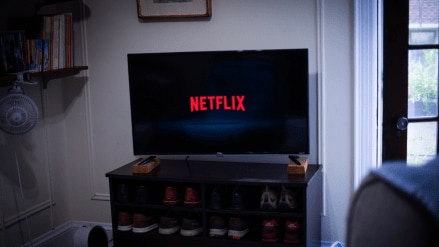In August this year, Netflix India strengthened its partnership with Jio Platforms, bundling its streaming service to the telco’s pre-paid plans, in addition to the post-paid and fibre plans.
The OTT giant has been hoping to tap a bigger catchment in its fastest growing market in the Asia-Pacific region where it has about 10 million subscribers. Indeed, the California-headquartered firm’s approach in India has been markedly different; the price-sensitive nature of the market, which fetches it a smaller ARPU than in the western markets, has shaped its strategy here.
With Reliance Industries closing in on Walt Disney’s India operations, however, Netflix may need to further finetune its India model. The deal, if it happens, could lead to a structural disruption for the Indian content ecosystem precipitating “an early consolidation in the OTT space”, analysts said. Already, trailing Disney+ Hotstar’s 40 mn viewers and Amazon’s 22 mn, Netflix is a distant third.
Experts say Netflix must re-work its model of being primarily a provider of top class global content for the English-speaking audience. This may enable the same content to be streamed across more than 100 countries and keep costs in check. But the catalogue needs to be far bigger with much more India-specific content, regional and vernacular, which also caters to the masses.
“Netflix needs some mass properties which the larger audience can sample, like Hotstar’s Special OPS or sports,” explains a consultant. An EY analysis noted that OTTs desirous of a national reach will need to focus on at least eight to nine languages.
Experts are convinced Netflix must pick out a few markets with depth, like India and China, and create local content. “Apart from a Sacred Games here and a Delhi Crimes there, I haven’t seen that aggression from Netflix,” says a media consultant.
Another gap that Netflix must fill is sports content. Given how Indians spend hours watching sports, Disney+ Hotstar’s sports library will be a huge asset for Reliance. “The India–Pakistan cricket match was watched by some 35 mn viewers. Even if Netflix streams football, the European League for instance, it can be a big draw,” a media expert observed.
“Of course, you can have Guns & Gulaabs and Hunt for Veerappan, but can you get new subscribers based on that? You need to add tent pole properties like the World Cup on Hotstar, which of course is free,” another media expert opined. Others point out that even game shows could be a big attraction.
At the same time, the pure-play subscription model itself will be under severe threat with Jio offering IPL and Hotstar offering World Cup cricket for free. While Netflix has lowered tariffs, it probably needs to become a lot more affordable. “Zee 5 charges about Rs 149 a year whereas Netflix’s subscription is Rs 149 a month,” points out an expert, suggesting lower price points are a must to hook viewers.
A veteran media planner notes that free streaming could wean away more viewers from paying more for OTT, and adds that incremental subscriber growth for players like Netflix could be arrested severely in the short term.
There’s room for further price cuts when one compares Netflix’s rates with those of Disney+ Hotstar. The latter’s top plan is priced at Rs 899 annually; the least expensive is Rs 299/year. For some regional players, the plans start at Rs 99/month or even Rs 50/month.
So Netflix might need to work with an ad-supported model, which it rolled out in 12 markets in late 2022, for a while, even as it scales up the subscriber base. As Karan Taurani, vice-president, Elara Capital, puts it, the combination of an ad tier and mass content can take Netflix to a wider audience base. “In India you have to adopt a freemium model — not pay-based, not free, it has to be somewhere in the middle,” he says.
An Ormax report says every paying user in India’s OTT market, has 2.4 subscriptions on an average. According to Shailesh Kapoor, founder & CEO, Ormax Media, penetration levels have hit more than 79% in the metros and, therefore, platforms need to reach out to smaller markets.
Kapoor believes growth will henceforth come from more viewers paying for subscriptions, rather than existing users paying more. As such, Netflix must ensure it is available on as many devices as possible so as to build on its presence.
Moreover, it must up marketing spend not just in the metros but also in the tier 2 towns. “It’s not only about billboards in the big cities, but more channels including telecom channels,” a media expert noted. Taurani suggests Netflix could explore bundling its offerings through more players in the ecosystem — be it e-commerce, super apps, or a TV OEM.
“Go all out for partnerships – be it with a mobile operator or a handset maker because 60% of OTT is consumed on the phone mobile,” an expert said.
To be sure the number of paid OTT users will grow from the current levels of about 130 million. Both 2022 and 2023 may have been good years for Netflix but getting to 15 mn subscribers will be harder if RIL buys Disney+ Hotstar. With 400 mn telecom customers and rights for streaming cricket, RIL is on a strong wicket.
Netflix and its OTT peers are also up against a lobby that wants them to fork out a network-usage fee. Without a successful broadcasting business to back it, Netflix needs a better script.
